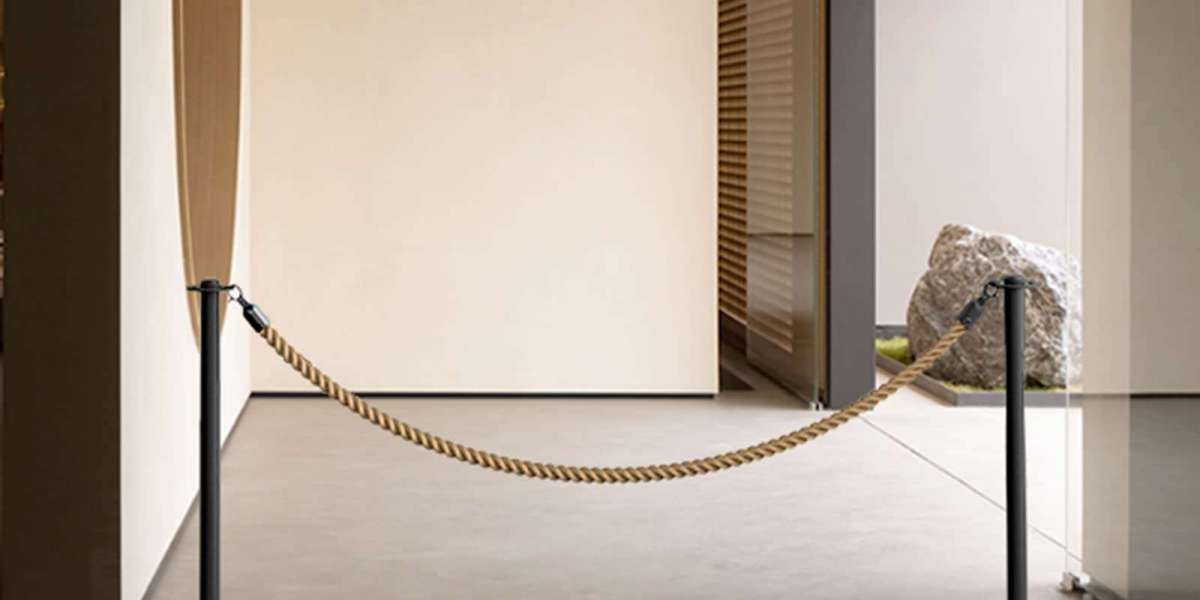Post rope barriers have become synonymous with organized crowd management and aesthetic enhancement in public and private spaces alike. These barriers, often seen at events, museums, theaters, and exhibitions, serve not only to guide individuals but also to add a touch of elegance and sophistication. This article explores the history and evolution of post rope barriers, tracing their origins, development, and current trends in design and functionality. From their humble beginnings to their contemporary applications, the post rope barriers encapsulate a fascinating journey of design and utility.
Historical Origins
The use of barriers to guide crowds dates back to ancient civilizations. The Romans, for example, employed various forms of barriers to manage crowds during public events. However, the specific concept of post rope barriers as we know them today began to take shape in the 18th century. During this time, the rise of public gatherings and events called for more structured crowd control measures. The concept of using a post connected by rope emerged, allowing for a flexible yet effective means of guiding people while maintaining a sense of openness.
19th Century Developments
As the 19th century progressed, the industrial revolution brought about significant changes in design and material availability. The post rope barrier began to evolve with the introduction of more durable materials such as brass and steel for posts, and higher-quality ropes that could withstand weather conditions and heavy use. This period also saw the emergence of decorative elements, as these barriers were no longer just functional but also served to enhance the aesthetic appeal of venues such as theaters and exhibition halls.
The Role of Post Rope Barriers in the 20th Century
The 20th century marked a significant turning point for post rope barriers as they became more widely adopted in various venues. With the rise of consumer culture and the increase in public events, the need for efficient crowd control became paramount. Post rope barriers found their way into museums, galleries, and upscale restaurants, where they played a vital role in managing foot traffic and ensuring an orderly experience. The design of these barriers became more refined, with a focus on both functionality and elegance.
Modern Innovations
In recent decades, post rope barriers have continued to evolve, incorporating modern materials and design aesthetics. The introduction of retractable belts has provided a new level of versatility, allowing venues to quickly adjust their layouts as needed. Additionally, the rise of branding and customizability has transformed the way post rope barriers are utilized. Organizations can now have their logos printed on the ropes or posts, allowing for an integrated branding experience at events.
Technological Integration
With the advancement of technology, post rope barriers are also beginning to incorporate smart features. Some modern barriers are equipped with sensors to monitor crowd density and movement, providing real-time data to event coordinators. This integration of technology not only enhances crowd management but also improves safety protocols in high-traffic areas. The combination of traditional design with modern technology signifies a new era in the evolution of post rope barriers.
Environmental Considerations
As sustainability becomes a more pressing global issue, the design and production of post rope barriers have also begun to reflect environmental considerations. Many manufacturers are now focusing on eco-friendly materials, such as recycled metals and biodegradable ropes. This shift not only helps in reducing the carbon footprint but also appeals to the growing demographic of environmentally conscious consumers and organizations.
Post Rope Barriers in Different Industries
The versatility of post rope barriers has led to their widespread use across various industries. In the entertainment sector, they are essential for managing queues and directing patrons in theaters and concert venues. In retail, they help create organized lines during sales events and promotions. Additionally, in the hospitality industry, they can enhance guest experiences in hotels and restaurants, creating an upscale atmosphere. This adaptability speaks to the barriers' enduring relevance in contemporary society.
Future Trends
Looking ahead, the future of post rope barriers appears promising as they continue to adapt to changing societal needs and technological advancements. As events become more interactive, there is potential for barriers to serve dual purposes, such as providing information through digital displays integrated into the posts. Moreover, the rise of hybrid events—where physical and digital experiences converge—may lead to the development of barriers that facilitate both in-person and virtual engagement.
Conclusion
The history and evolution of post rope barriers reflect a broader narrative of design, functionality, and societal change. From their origins in ancient crowd management to their modern applications in a variety of settings, these barriers have proven to be indispensable tools for organizing public spaces. As we move forward, the integration of technology and sustainability will likely shape the future of post rope barriers, ensuring they remain relevant and effective in an ever-changing world. The post rope barrier is not just a simple tool but a symbol of our ability to organize, control, and beautify our environments.








